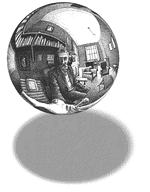Could Zyklon-B Be Used for Mass Gassings?

Dear AnswerMan,
What evidence is there to support the theory that Zyklon-B could not be used to exterminate millions of Jews in gas chambers?
Nicole

AnswerMan Replies:
The substance is capable of killing people, of that there is no doubt. The problems with it are at least threefold. First, it would be a remarkably poor choice to be made by the people who invented (and did not use) the nerve gas Sarin. Second, the release of the gas from its carrier pellets is a process that takes 2 to 3 hours to complete, longer than that in cold climates such as northern Poland, a trait quite at odds with descriptions of its almost instantaneous effect. Third, cyanide fumes (HCN in the vapor state) react with and leave residual traces of a highly stable cyanide compound in the mortar of brickwork. Chemical analyses of samples taken from alleged homicidal gassing chambers were compared with samples taken from buildings known to have been used for delousing clothing and bedding to stem the incidence of typhus. The walls of the delousing chambers had residual cyanide levels as high as 13,500 parts per million, while the rooms said to be gas chambers had on the average about 2 parts per million, within the zero error of the measurement technique and similar to that found in other buildings nearby (used as a base of comparison) that may have been fumigated a few times during the war.
The chemical measurements have been verified by several researchers: Leuchter, Rudolf, Ball, and a Polish commission from the University of Kracow (I think I'm leaving one out, perhaps an Austrian engineer). The Polish group made their tests in an attempt to refute those that came earlier. On their first pass, much to the dismay of those who seek to sustain the illusion, their numbers agreed with the other researchers. Another commission was assembled in 1994 (or thereabouts) that came back with results that disagreed with the first, because of some word trickery that limited the scope of the tests. A claim is made that since the two buildings in question at Birkenau were dynamited, the residuals were washed out by 50 years of acid rain. This simply is not the case. Samples were taken from the partially intact morgue room of Krema II at Birkenau, where the foot-thick reinforced concrete roof only fell several feet as one distorted and cracked but still intact piece rather than being scattered as rubble. There is a large portion of the room still accessible, and well protected from rain. But in any case, this excuse fails to address why one can still measure extremely high levels of Prussian blue (the cyanide residual) on the exterior walls of building BW 5b, a delousing facility at Birkenau. Samples taken from the walls fully exposed to the 50 years of rain ranged from 2,000 parts per million to 10,000, and the highly visible dark stains in the brickwork reveal the presence of Prussian blue even without a test. You can see the same effect on brick structures in mining installations throughout the world, wherever ore with a high cyanide content is smelted.
These details and more, including pictures of the items discussed above, can be seen on the Web at The Rudolf Report.
Bibliographic information about this document: n/a
Other contributors to this document: n/a
Editor’s comments: n/a
